
Mary Ann Day Brown was the second wife of abolitionist John Brown, leader of a raid on Harpers Ferry, Virginia, which attempted to start a campaign of liberating enslaved people in the South. Married at age 17, Mary raised 5 stepchildren and an additional 13 children born during her marriage. She supported her husband's activities by managing the family farm while he was away, which he often was. Mary and her husband helped enslaved Africans escape slavery via the Underground Railroad. The couple lived in Pennsylvania, Ohio, and in the abolitionist settlement of North Elba, New York. After the execution of her husband, she became a California pioneer.

Playter Estates is an area in the east end of Toronto, Ontario, Canada bounded by Jackman Avenue to the east, the Don River Valley to the west, Danforth Avenue in the south, and Fulton Avenue in the north. The neighbourhood is built on land once owned by the Playter family for whom two streets in the area are named. The old farmhouse of the Playter household at 28 Playter Crescent is now the Playter Mansion, which is often used for various films, television shows, and commercials.
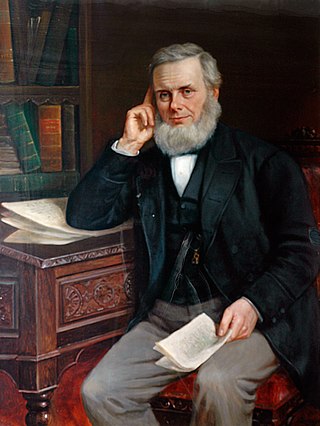
William Grainge was an English antiquarian and poet, and a historian of Yorkshire. He was born into a farming family in Dishforth and grew up on Castiles Farm near Kirkby Malzeard in the North Riding of Yorkshire, where he studied the archaeological site beneath the farm buildings, now known as Cast Hills settlement. Although he left school at age 12, he educated himself well enough to become a clerk to a solicitors' firm in Boroughbridge. He later established a bookshop in Harrogate and published numerous books on local history and topography, besides publishing a number of anonymous poems and discourses about local natural history.

Kirkby Malzeard is a village and civil parish in the Harrogate district of North Yorkshire, England. There has been a creamery in the village making Wensleydale cheese for almost 100 years, first owned by Mrs Mason, then Kit Calvert, of Hawes, subsequently the Milk Marketing Board and more recently it was acquired by the Wensleydale Creamery.

Charles Johnson Maynard was an American naturalist and ornithologist born in Newton, Massachusetts. He was a collector, a taxidermist, and an expert on the vocal organs of birds. In addition to birds, he also studied mollusks, moss, gravestones and insects. He lived in the house at 459 Crafts Street in Newton, Massachusetts, built in 1897 and included in the National Register of Historic Places in 1996 as the Charles Maynard House. The Charles Johnson Maynard Award is given out by the Newton Conservators, Inc.
Bowden is a historic estate in the parish of Yealmpton in Devon, England. From the 15th century until 1748 the manor house was for eight generations the seat of a junior branch of the Copleston family of Copplestone. The manor house was largely rebuilt in the 19th century and, together with some of its outbuildings, now serves as a farmhouse.

Sir Thomas Gargrave (1495–1579) was an English Knight who served as High Sheriff of Yorkshire in 1565 and 1569. His principal residence was at Nostell Priory, one of many grants of land that Gargrave secured during his lifetime. He was Speaker of the House of Commons and vice president of the Council of the North.

Sir Cotton Gargrave (1540–1588) was an English landowner and politician who sat in the House of Commons in 1571 and 1572.

Sir Thomas Gery Cullum, 7th Baronet was a medical doctor educated at London Charterhouse and Trinity College, Cambridge, and who later practised surgery at Bury St. Edmunds, Suffolk, where he served as an alderman and Deputy Lieutenant for Suffolk.
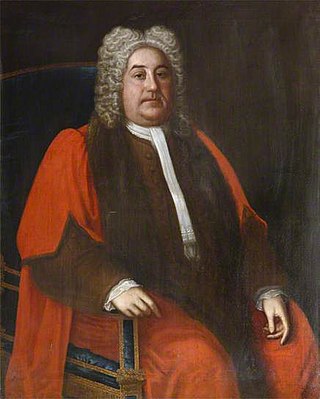
Benjamin Incledon (1730–1796) of Pilton House, Pilton, near Barnstaple in North Devon, was an English antiquarian and genealogist. He served as Recorder of Barnstaple (1758–1796).
High Elms Manor is a grade II listed Georgian country house located near Garston in Hertfordshire, England. It was built in around 1812, and was originally known as "High Elms", but from the 1890s to 2010 it was called Garston Manor.
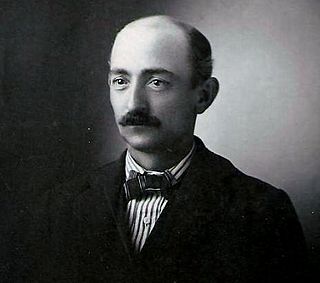
Frederick Hinde Zimmerman was an American banker, farmer, real estate entrepreneur, businessman, and hotel owner. Due to his large land holdings and expertise in farming, Zimmerman became a notable farmer, breeder, and real estate entrepreneur. Zimmerman's farm, originally purchased by his grandfather Thomas S. Hinde from the federal government in 1815, included the Grand Rapids Dam, Hanging Rock, and Buttercrust. His first experience running a business was in 1883 when he ran a grocery store in Fort Smith, Arkansas with his cousin Harry Hinde. Many of his businesses centered on his family farm, but in later years Zimmerman achieved success through his ownership and investment in mines, banks, and real estate. He also owned or invested in the Hanging Rock and Grand Rapids Dam Farm Company, the Grand Rapids Hotel Park Company, and the Wabash Bull-Frog Mines Company.

Great Fulford is an historic estate in the parish of Dunsford, Devon. The grade I listed manor house, known as Great Fulford House, is about 9 miles west of Exeter. Its site was said in 1810 to be "probably the most ancient in the county". The present mansion house is Tudor with refurbishment from the late 17th century and further remodelling from about 1800. The prefix "Great" dates from the late 17th century and served to distinguish it from the mansion house known as "Little Fulford" in the parish of Shobrooke, Devon, about 8 miles to the north-east, also owned briefly by Col. Francis Fulford (1666–1700), as a result of his marriage to the heiress of the Tuckfield family. Great Fulford has been the residence of the Fulford family, which took its name from the estate, from the reign of King Richard I (1189–1199) to the present day. There are thus few, if any, families in Devonshire of more ancient recorded origin still resident at their original seat. In 2004 the estate comprised 3,000 acres.

Sharpham is an historic estate in the parish of Ashprington, Devon. The Georgian mansion house, known as Sharpham House, overlooks the River Dart and is a Grade I listed building. The house was commenced in about 1770 by the Royal Navy captain Philemon Pownoll to the designs of the architect Sir Robert Taylor (1714–1788). In the opinion of Nikolaus Pevsner it contains "one of the most spectacular and daring later 18th century staircase designs anywhere in England". The park and gardens are Grade II* listed in the National Register of Historic Parks and Gardens. Part of the descent of Sharpham is shown on the Palmes family heraldic pedigree roll.
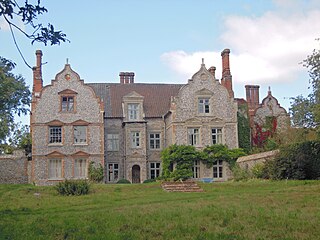
Wiveton Hall is a country house in Wiveton, Norfolk, England. It is Grade II* listed. It was built in 1652 and extended in 1908. However there are remains of an older building in the garden which could date back to 1280. It was the residence of many notable people over the next three centuries and is now the home of the MacCarthy family. The Hall provides holiday cottage accommodation, a restaurant café, a farm and gift shop and has garden tours. The West Wing is available for weddings and other special events.

John Quicke (1724–1776) of Newton House in the parish of Newton St Cyres in Devon, was Sheriff of Devon in 1757.
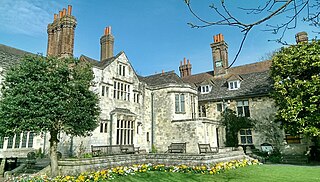
Southover Grange in Lewes, Sussex is a house of historical significance and is Grade II* listed on the English Heritage Register. It was built in 1572 by William Newton and owned by this family for the next three hundred years. After this it was the residence of many notable people until it was bought by the local Council in about 1945. Today it is owned by the East Sussex County Council. It now houses the Lewes Register Office which provides Marriage Ceremony Packages, civil partnerships and citizenship ceremonies. The gardens host events from local theatre to beer an gin festivals.
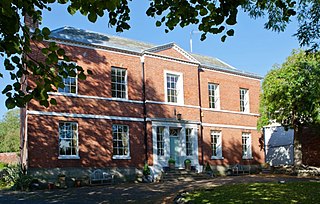
Breedon Hall, Breedon on the Hill in north-west Leicestershire, is a house of historical significance and is listed on the English Heritage Register. In 1620 it was a small timber-framed cottage. Soon after it was bought by the Curzon family and was successively enlarged until 1777 when it was given a new Georgian front. It was the ancestral home of the Curzons for over three centuries and then bought by the Shields family. Today it is owned by the Meynell family and provides bed-and-breakfast accommodation.
Janet Evelyn Mary Tempest was an Argentine-born British landowner and Catholic philanthropist. She was the châtelaine of Broughton Hall, the seat of the Tempest family in North Yorkshire. A devout Catholic, she was a devotee of Mother Teresa, having met her in India. She volunteered internationally with the Missionaries of Charity and ran a clothing bank at Broughton Hall for the poor in Kolkata and in Eastern Europe. Tempest also funded the construction of an extension to St. Stephen's Catholic Primary School and Nursery in Skipton. In 2004, she sustained permanent injuries from falling off a camel while on safari in Kenya.


















